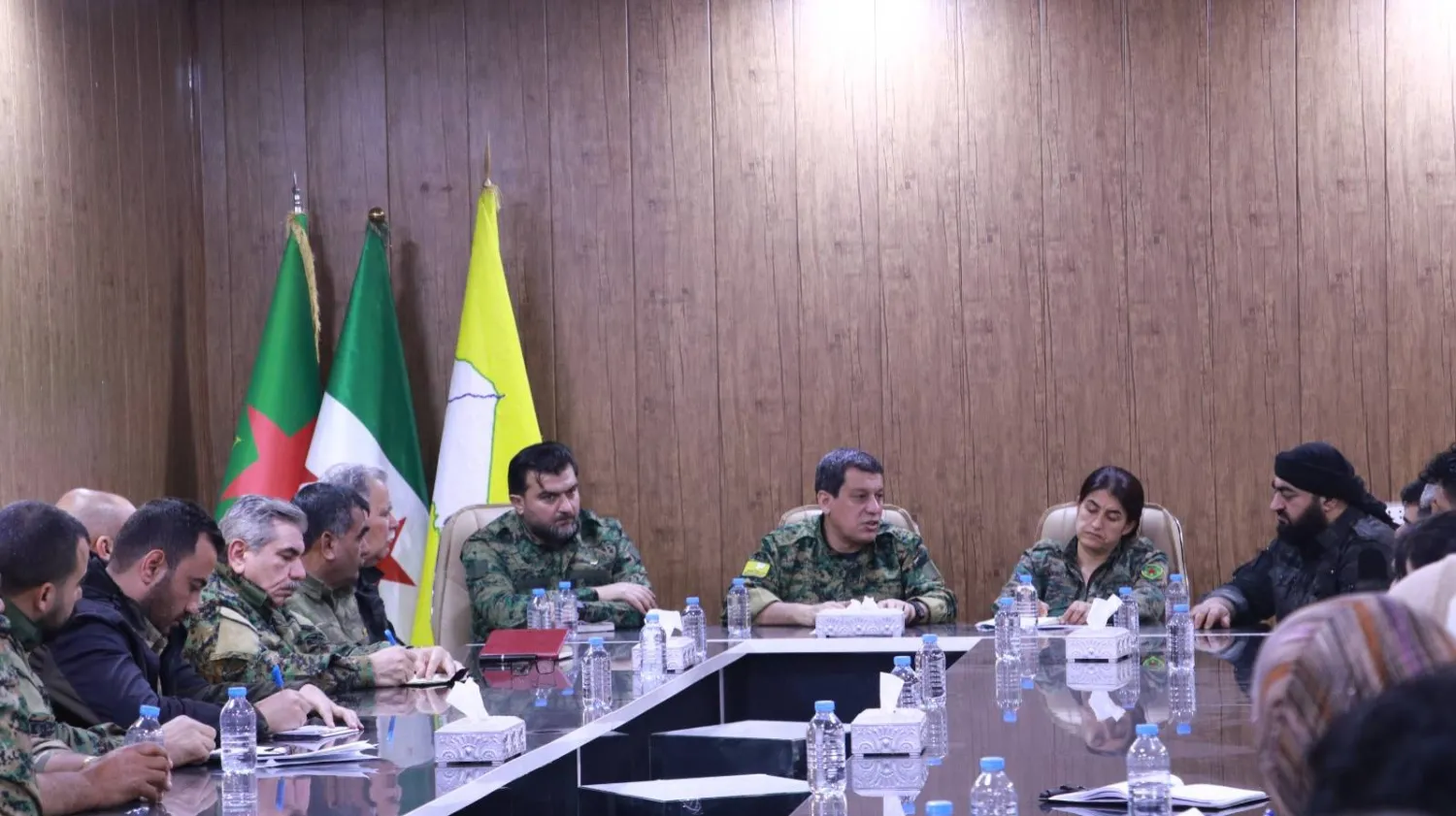Damascus and the SDF sketch terms for integration as talks intensify

Syrian Democratic Forces (SDF) commander Mazloum Abdi says Damascus and the SDF have reached a “preliminary understanding” on how to fold the Kurdish-led force into Syrian state structures: existing SDF units would be re-badged under Syrian military brigades while keeping their internal structure and current areas of deployment. Abdi stressed the arrangement remains provisional and that differences persist between the sides.
Istanbul-based Syria TV, citing Syrian government sources, offered a more granular outline. Under its account, the SDF would be reorganized into three divisions, one aligned to each of Hasakah, Raqqa and Deir Ezzor, the three provinces where the SDF currently holds sway. Forces would stay in place and, crucially, retain their current commanders, even as they move under the Syrian army’s umbrella. Post-integration, the SDF label would fall away and units would operate under official state designations.
Context: Two delegations from North and East Syria met Syrian officials in Damascus to discuss integration.
An SDF delegation met the interim government’s Minister of Defense, Marhaf Abu Qasra. The delegation included General Command members Sozdar Haji and Sipan Hemo, SDF spokesperson Abjar Dawoud, and senior commander Shakir Arab.
A second delegation, representing the Internal Security Forces (Asayish), met the interim government’s Minister of Interior, Anas Khattab. That delegation included Maj. Gen. Diler Hussein Temo, Maj. Gen. Ali Khidr al-Hasan, Maj. Gen. Mustafa Mahmoud Dali, Maj. Gen. Aho Aylio Lahdo, and Arin Mustafa, the Deputy Co-Chair of the Interior Board in the Democratic Autonomous Administration.
Details: According to Abdi, what exists at this stage is a preliminary understanding: a broad framework that envisions the SDF’s re-designation under Syrian military brigades without dismantling its structure. Under this approach, the forces would remain deployed in their current areas, primarily Hasakah, Raqqa and Deir Ezzor, with some areas of eastern Aleppo still under SDF control would also be covered by these divisions. Internal Security Forces (Asayish) would be integrated into the Ministry of Interior. Joint committees would be established to accelerate implementation, but several political and technical points remain unresolved.
Abdi has said that while there is shared will to move forward, differences persist — especially around the SDF’s demand for a decentralized political model. The integration plan foresees the disappearance of the SDF label, but it does not yet define how the chain of command will function once the forces come under formal state control. Abdi also publicly acknowledged the role of the United States and France in facilitating and overseeing the process.
Syria TV, citing Syrian government sources, reported a more detailed account of how the plan is expected to work. The SDF would be reorganized into three divisions corresponding to the provinces of Hasakah, Raqqa and Deir Ezzor. These divisions would stay in their current positions and keep their existing commanders in place, while being formally placed under the Syrian army. The Asayish would be transferred to the Ministry of Interior. Local administrative structures would remain in place, and Damascus would appoint provincial officials from the local population in consultation with local administrations. After the integration, there would be no separate SDF force: all units would operate under official state designations.
The integration process would be overseen by joint committees with U.S. involvement, reflecting a carefully managed transition that seeks to avoid abrupt disruptions on the ground.
While both accounts converge on the structural outline — military integration under the Ministry of Defense, internal security under the Ministry of Interior, and forces remaining in their home provinces — several elements remain unclear. The most important of these concerns the future chain of command. Syria TV’s reporting indicates that current commanders will be retained, but how this will fit within the Syrian army’s hierarchy has not been spelled out. The broader political question of decentralization is also unresolved.
No timeline has been made public for when the division structure would be formalized, units re-badged, or legal decrees issued. Nor is it clear how this model would apply to areas beyond the three core provinces, particularly eastern Aleppo, where the security landscape is more complex.
If carried through, the plan would formalize SDF forces within Syrian state structures while preserving local security continuity. For Damascus, this would mean reasserting nominal control without an immediate military confrontation. For the SDF, it would preserve territorial presence and leadership continuity while moving into a negotiated framework.
But as Abdi himself has admitted, beyond this verbal and preliminary understanding, many of the key details remain undiscussed, and its success ultimately hinges on Turkey’s approval. Without Ankara’s consent or at least acquiescence, the understanding is unlikely to hold. Whether this fragile arrangement develops into a lasting settlement will depend not only on bridging unresolved political and command issues but also on Turkey’s role in shaping the broader security environment in northern Syria.









